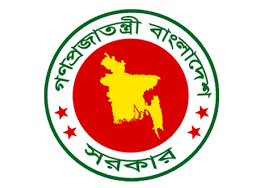The General Economics Division (GED) of the Bangladesh Planning Commission has projected a cautiously optimistic outlook for the country’s economy in FY2026, citing early signs of recovery alongside a range of persistent structural and external challenges.
In its latest monthly economic update, the GED notes that the first month of the new fiscal year shows tentative signs of a rebound, though growth expectations remain tempered by lingering political uncertainty, weak private investment, and sluggish industrial activity. External pressures—most notably the recent imposition of reciprocal tariffs by the United States—have also contributed to a less favorable economic climate.
Reflecting these concerns, global financial institutions have downgraded their forecasts for Bangladesh’s growth in the current fiscal year. The World Bank now expects GDP growth to range between 3.3% and 4.1%, while the Asian Development Bank has projected growth at 3.9%. A modest rebound is anticipated in FY2026, with projections hovering between 5.1% and 5.3%.
The GED report highlights a number of constraints weighing on the economy. Among them are consistently low levels of foreign direct investment, which remain suppressed due to waning investor confidence and a narrow fiscal space exacerbated by underwhelming revenue collection and constrained public investment. A provisional estimate by the National Board of Revenue indicates a revenue shortfall, made worse in June by temporary disruptions linked to proposed reforms within the tax authority.
Key economic drivers—remittances, export earnings, and manufacturing—will be essential in sustaining GDP growth, the GED report emphasizes. However, it also warns of several risk factors. Foreign reserves remain under pressure, global consumer behavior is shifting, and inflation, though moderating overall, continues to pose serious concerns—particularly in the food sector.
Food inflation remains stubbornly high, with rice prices surging in June. Medium and coarse varieties of rice alone contributed to nearly half of food inflation that month. The report attributes the spike to rising input costs, post-harvest losses, increased transport expenses, and speculative hoarding. It calls for urgent intervention to stabilize supply chains and ensure better price management.
The banking sector, meanwhile, continues to show signs of strain. Both deposit growth and credit expansion have slowed markedly, with private sector credit growth remaining below 8% for six consecutive months. This decline has been driven by inflationary pressures, a tight monetary policy stance, and reduced access to import financing.
In light of these challenges, the GED recommends a renewed focus on structural reforms and investment-friendly policies. It calls for strategic economic reorientation to restore growth momentum and build resilience against both domestic vulnerabilities and global uncertainties.
While the outlook for FY2026 is not without promise, the GED’s report makes clear that recovery will require careful policy calibration and decisive action on multiple economic fronts.

